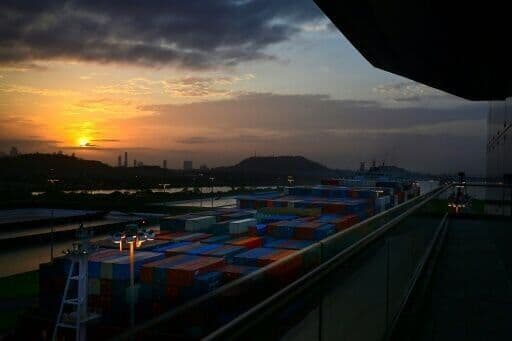We're loading the full news article for you. This includes the article content, images, author information, and related articles.
A landmark arbitration ruling has ended a bitter dispute over the Panama Canal's expansion, a project vital to global trade. For Kenya, the outcome highlights the high-stakes nature of international infrastructure deals and reinforces the strategic dominance

GLOBAL - The Republic of Panama has secured a decisive victory in a multi-billion-dollar legal battle against Spanish construction giant Sacyr over massive cost overruns incurred during the landmark expansion of the Panama Canal, a critical artery for global maritime trade. In a ruling announced on Friday, November 1, 2025, an international tribunal dismissed all claims brought by Sacyr, which sought approximately $2.3 billion, and ordered the company to pay Panama $6 million in arbitration costs.
The case, filed by Sacyr in 2018, was heard under the arbitration rules of the United Nations Commission on International Trade Law (UNCITRAL). The Spanish firm alleged that Panama had violated a free trade agreement between the two nations. However, the tribunal determined the claims were inadmissible, concluding they were fundamentally related to the construction contract rather than the bilateral trade agreement, according to a statement from the Panamanian government.
Panama's President, Jose Raul Mulino, celebrated the verdict on the social media platform X, formerly Twitter, calling it "a great achievement." The ruling marks a significant moment in a long and contentious history of disputes surrounding the ambitious infrastructure project.
The Panama Canal expansion, one of the largest engineering projects of the 21st century, was carried out between 2009 and 2016. The work was undertaken by the consortium Grupo Unidos por el Canal (GUPC), which included Sacyr of Spain, Italy's Impregilo (now WeBuild), Jan De Nul of Belgium, and Panama's Constructora Urbana.
The project, which involved building a third set of locks to accommodate larger "Neo-Panamax" ships, was initially budgeted at $5.25 billion but was beset by delays, strikes, and bitter disputes over escalating costs. The GUPC consortium filed a series of claims over the years, arguing that unforeseen geological conditions and other issues led to massive cost overruns, with total claims eventually exceeding $5.6 billion. This led to multiple complex arbitration processes, primarily adjudicated by the International Chamber of Commerce (ICC), alongside the UNCITRAL case.
The 2016 expansion successfully doubled the canal's capacity, reshaping global shipping lanes, particularly between Asia and the East Coast of the United States. By allowing much larger vessels to transit, the expansion aimed to offer economies of scale, potentially lowering per-container shipping costs and altering global supply chains. Ports along the U.S. East and Gulf coasts invested billions of dollars in dredging and infrastructure upgrades to accommodate the larger ships arriving via the newly expanded canal.
However, the direct impact on Kenya and the broader East Africa region is minimal. The primary maritime trade route connecting Kenya to its key trading partners in the Americas, including the United States, does not utilize the Panama Canal. Shipping from U.S. ports like New York or Houston to Mombasa typically traverses the Atlantic Ocean, the Mediterranean Sea, and the Suez Canal—a shorter and more established route.
According to a February 2024 report from the UN Conference on Trade and Development (UNCTAD), East African nations like Kenya, Djibouti, Tanzania, and Sudan are heavily dependent on the Suez Canal for their foreign trade. The Panama Canal's strategic importance is more pronounced for the west coast of South America, with countries like Chile and Peru relying on it for over 20% of their trade volumes.
For Kenyan businesses and consumers, the stability and efficiency of the Suez Canal remain far more critical. Recent disruptions in the Red Sea have underscored this dependence, leading to delays and increased costs that directly affect the Kenyan market. The resolution of the Panama Canal dispute, therefore, serves more as an indirect lesson on the complexities of global infrastructure projects and the legal frameworks governing them, rather than a direct influence on local trade logistics.
The verdict in Panama's favor reinforces the principle that contractual obligations are distinct from protections offered under international trade treaties—a precedent of note for nations globally, including Kenya, as they engage in large-scale infrastructure partnerships with international firms. The case underscores the critical importance of meticulously defined contracts and dispute resolution mechanisms in safeguarding national interests during such mega-projects.
Keep the conversation in one place—threads here stay linked to the story and in the forums.
Other hot threads
E-sports and Gaming Community in Kenya
Active 7 months ago
Popular Recreational Activities Across Counties
Active 7 months ago
The Role of Technology in Modern Agriculture (AgriTech)
Active 7 months ago
Investing in Youth Sports Development Programs
Active 7 months ago